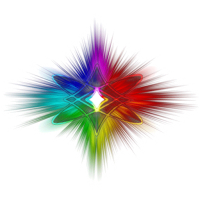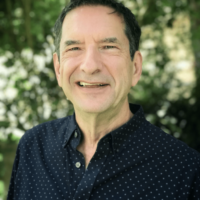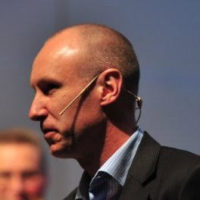How many times in the last two years have you heard someone say, “I just want things to get back to normal?” After such a long time on shaky ground—two years of a global pandemic, now a war that is shaking the whole world, continuing political and economic uncertainty, personal ups and downs—many of us long for stability and certainty. We long for a feeling that everything is ok and that our future is secure. Yet in the collective, that’s not where we are. Nor does it seem we’re going to be there anytime soon. So how do you find stability when everything keeps changing?
“Normal” means different things to different people. Yet in the context of all that is happening, “normal” seems to mean that life is steady, predictable, and comfortable. While a little variety in life can be fun and spice things up a bit, at the most primal level, the human energy system is hard-wired to maintain stability. It’s looking for equilibrium, predictability, steady rhythm to ensure our survival.
I admit my own propensities for stability and predictability. I am a man of habit and structure. I am most comfortable when things are familiar, when I know how things work, when I know what I can count on and what I can’t, when life’s waters are calm and flowing with relative ease. All my years of travel and working in different countries and cultures pushed me beyond my comfort zone. I learned a lot and became more of a global citizen, yet I admit that my stress level was high. I was blessed to be well taken care of most places that I went so that I could focus on my work and not lose energy in navigating unknown places and systems. I am forever grateful to those who supported me so well.
Yet these days, even though I spend most of my time in my home base, less and less feels familiar. “How things work” keeps changing. It seems that every week I stumble across something else I can no longer count on in the ways that I used to. The ground under my feet rumbles more often than I would like. It’s clear that there is a “new normal,” which now seems to mean “everything is changing; don’t expect steady and predictable.” I admit that I don’t like it very much.
Yet it doesn’t matter whether I like it. This is where we are. The world has entered a new era. While events like COVID or Russia’s war on Ukraine can make it seem like we landed in this new era overnight, the truth is that we’ve been on our way here for a long time. As a society, we have gotten really good at “looking the other way” when what is happening isn’t what we want, or isn’t convenient in the moment, or threatens our comfortable lives. But that’s another discussion.
So back to our question: How do you find stability when everything keeps changing?
Acceptance As a Proactive Approach
A first step is acceptance. However, that may not mean what you think. Not passive acceptance as in “surrendering” to what is happening. Not passive acceptance as in, “I can’t do anything about that, so I just have to live with it.”
I’m talking about proactive acceptance—acceptance as a proactive response.
When you understand life as energy in motion, proactive acceptance begins to make sense. It means accepting what is in front of you and working with it rather than either giving up or fighting against it.
It means heightening your inner and outer senses—observing, listening, sensing, and feeling the situation from inside and out—and trusting that there are important messages trying to get your attention. Most likely, there are invitations as well.
From Reaction to Response
On the surface, what is happening may feel very wrong. It may challenge every fiber of your being. It may make your blood boil with anger or instill paralyzing fear. If your physical safety is threatened, you may need to act quickly to remove yourself from the immediate danger. However, more common are the situations that bring a strong emotional reaction.
Your initial reaction carries within it a lot of information about what is important to you, what you value, what you care deeply about. Experiencing a strong emotional reaction is a sign that a shift is trying to break through—a new path, a new way of doing things, a new way of being with what is happening or with the people and circumstances involved.
You often can’t control your initial reaction. Adrenaline takes over and you react without thought or consideration. However, you—all of us—can learn to recognize what is happening more quickly and then make a different choice. You can choose right away to step out of reaction mode into response mode.
Response mode begins with taking a breath, quickly assessing the bigger picture of what is happening, and consciously choosing your next words or action.
Reaction mode rarely has any space for acceptance.
Response mode, on the other hand, offers space for three steps:
- Stepping back, even if for only a moment, to recognize the bigger context in which the situation is unfolding
- Accepting the realities of the moment
- Beginning to work with the energies that are present rather than push against them
Looking For the Bigger Context
Proactive acceptance is most effective when you look for the bigger context within which the situation is unfolding. The bigger view you can have, the better. Acknowledging and accepting the bigger-picture reality can help you sense where to focus your attention first.
When you don’t acknowledge and accept the bigger-picture reality, you are more likely to lose energy wishing things were different or fighting against the situation. You will end up treating symptoms rather than addressing the underlying causes. Most situations have many layers. Whatever is happening is most likely a result of deeper causes. Cutting through to the deeper layers, sensing what is trying to shift or what is calling for your attention, and then responding at those deeper layers, will be much more productive. Proactive acceptance creates an energetic space for new possibilities to show up.
I’m not saying this is easy—in fact, it might challenge you and those around you to step forward in ways you never have before. Yet if you are willing to stay with it, doors can open. More possibilities are likely to appear for significant shifts in awareness, understanding, and action. Whether or not you walk through those doors is your choice.
A New Kind of Stability Awaits
How do you find stability when everything keeps changing?
First, accept that what is happening is, in fact, happening. And then pay attention. There will be messages and signs for how to move forward. They often show up in unexpected places, so it’s up to you—to all of us—to be on the lookout for them.
Second, as you begin to sense the bigger picture of what is trying to shift or transform—an awareness, an understanding, a way of doing things—plant your feet in the wave of the shift that wants to happen.
It’s not about looking for solid ground. It’s about learning to ride the waves. As you learn to ride the waves, you will find a new kind of stability. It may be different than how you have known stability in the past. Yet you will discover new understanding about how life works as energy in motion. Through that understanding, you will discover new ways to partner with change to co-create a new kind of stability.
Have I gotten good at doing this all the time? Not yet.
Have I learned to like what’s happening? Let’s just say I’m working on it.
I’m getting better at accepting the realities of what is happening and working with them. I keep learning more about partnering with the breakthrough, shift, or transformation that is trying to emerge. I often don’t know where it’s going to take me. I’m learning to be more at peace with that, and keep listening, sensing, and responding to what the situation is asking me for. And although some moments are easier than others, I am finding my way towards a new kind of stability in this “new normal.”
And you can, too.
~ ~ ~





































